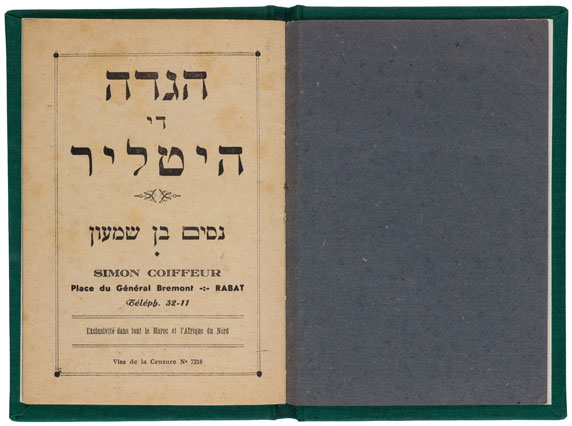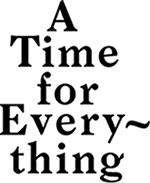Liberation
The Hitler Haggadah
Rabat, Marocco, 1943

-
Paper, printed
© Gross Family Collection, Tel Aviv, photo: Ardon Barhama
Each year, the Pesach (Passover) celebration begins with Jewish families reading the Haggadah (telling) together in a circle of friends and relatives. The ritual meal the first evening is called a seder (order), referring to its set order as determined by the Haggadah, including the sequence for eating symbolic foods that commemorate the period of slavery in Egypt.
Children have an important task on this evening. Each year the youngest member of the family or the youngest guest asks the Four Questions in the Haggadah about the meaning of Passover. This ritual serves to keep alive memories of the origins of the festival.
The Pesach Haggadah tells the story of the liberation of the Israelites from slavery and their exodus from Egypt. The central themes of the story—oppression and liberation—are still relevant today. For this reason, present-day references are often worked into new versions of the Haggadah. In the twentieth century, the motif of the liberation of the Jews was often placed in the context of the events of the Second World War.
Jews living in North Africa were constantly threatened by the Germans during the North African campaign from 1940 to 1943. In the French colonies of the Vichy Regime, which was allied with Germany, racial laws and forced labor camps had already been established for the Jewish population. In the end, the Allied victory saved the Jews of the Maghreb from systematic deportations. The Haggadah shown here depicts the victory of the Allies over the German Wehrmacht in North Africa. The Haggadah di Hitler was written in Judeo-Arabic, a language that uses the Hebrew alphabet and is common among Jews in the countries of the Arab world.


















